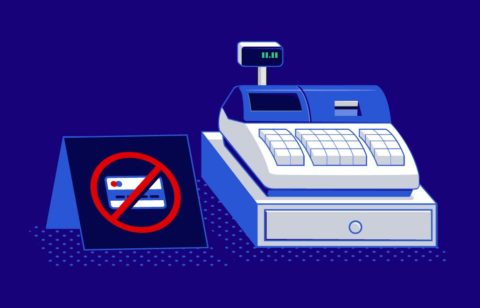If you’re struggling with credit debt, you’re definitely in good company. Millions of Americans are having trouble dealing with the large amounts of credit debt they’ve accumulated. The COVID-19 pandemic has left millions of Americans unemployed or underemployed, which has made it even harder for them to tackle that debt. If you’re in the process of figuring out the best way to start paying down that debt, one of the most important things to do is learn the lingo. Many terms are specific to credit debt and debt repayment; in fact, the team at National Debt Relief has an entire glossary dedicated to finance and debt terminology. You may not learn all these debt terms in one sitting; however, the more you know and understand the better. Therefore, if you’re trying to get out of credit debt today, you need to know at least these five terms.
1. Consolidation Loan
If you’re trying to pay off your credit card and other debt, you’ll often hear about the debt consolidation loan option. A consolidation loan is a single loan a borrower will take out to combine all previous debts into that new loan. Consolidation loans normally have a lower interest rate and longer repayment horizon than the borrower’s other debts, so monthly payments are lower than what the borrower was facing with multiple credit card balances due.
Additionally, after combining all debts into the new consolidation loan, the borrower will have just a single debt payment to contend with each month. This helps streamline bills and makes debt management a bit easier. However, since debt consolidation loans typically have an extended repayment period, you may stay in debt longer with one of these loans than if you’d chosen a different method to repay your debt. Finally, consumers who don’t have a good credit score (see below) may not even qualify for one of these loans; they’ll have to determine an alternate method to get out of credit debt.
2. Credit Score
A credit score is a statistically derived, numerical score, based upon various characteristics of an individual’s credit history. In essence, it measures creditworthiness. A higher credit score often leads to better opportunities when a borrower is trying to obtain a loan to make a large purchase. Lending institutions use credit scores to help determine factors such as the interest rate of a loan and the amount of down payment or collateral that’s required. Your credit score may also determine whether you qualify for a loan at all.
Your credit score is calculated by examining several factors in your financial record, such as your payment history, how much of your credit you’re utilizing, and several other matters related to your use and amount of credit. It’s easier than ever to monitor your credit these days; many online banks offer a real-time view of your credit score on their dashboard, and numerous mobile apps track it for you as well.
3. Credit Report
While it’s good to know your credit score, knowing it isn’t enough. That’s where your credit report comes in. A credit report is a report of a person’s credit history, prepared by a credit bureau, which lists how individuals manage their debts and make payments, how much untapped credit they have available, and whether they’ve applied for any loans recently. The reports are made available to individuals and to creditors who have a legitimate need for the information, such as when evaluating someone for a loan. This is also an important report for consumers to use to find problems with their credit, so they can put the time in to address them and improve their overall credit rating. You can download your credit report free once (from each bureau) every 12 months.
4. Secured Debt
A secured debt is a loan upon which collateral has been pledged by the borrower. The creditor can institute a foreclosure or repossession, or take the property identified by the lien, called the collateral, to satisfy the debt if you default. A home is one of the most common assets used as collateral, but other valuable items may be used in a secured debt transaction. Secured debts are often considered less risky by lending institutions, so borrowers using collateral can often obtain loans with lower interest rates than they would if the debt was unsecured. Additionally, borrowers with credit issues can often obtain loans by using collateral that they otherwise wouldn’t be able to qualify for. However, if you start to have payment issues or default on your secured loan, the lender could opt to seize the asset used as collateral.
5. Variable Interest Rate
A variable interest rate is an interest rate that changes up or down on a set schedule based upon an economic index, such as the prime rate. If you’re trying to get out of credit debt, this is an important term to know. People often use debt consolidation loans or credit card balance transfers to consolidate their credit cards or obtain lower monthly payments on their outstanding debts.
However, while these introductory rates may start low, the lender may raise them substantially once that introductory period ends. This could leave the borrower in a worse situation than when he or she took out the new loan or balance transfer card. Therefore, prior to signing up for any credit card or loan, especially if you’re using it to get out of credit debt, one of the first things you should determine is whether the new loan has a variable interest rate.
Learn the Lingo!
If you want to get out of credit debt, it will help to become familiar with the terminology that lenders, credit counselors, and other financial experts use to discuss the issue. So, bookmark NDR’s financial glossary on your browser, and refer to it whenever you need to get smart on financial lingo!





